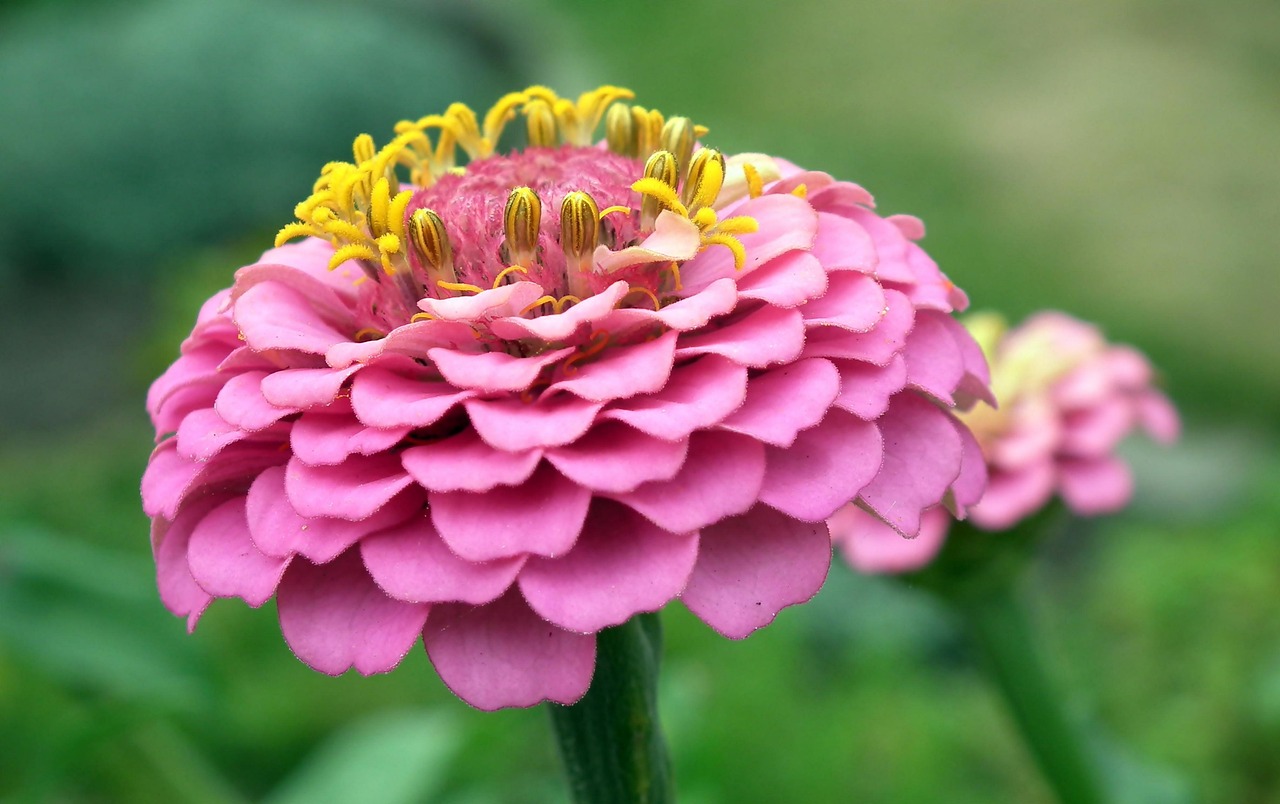
Zinnias, with their vibrant colors and diverse forms, are the quintessential summer flowers. But their beauty extends beyond garden borders; they’re also phenomenal cut flowers, gracing vases with their cheerful presence for days on end. Whether you’re a seasoned gardener or just starting your floral foray, cultivating a flourishing zinnia cut flower garden is easier than you might think. Here are 10 essential tips to guide you on your journey:
1. Sunshine Superstars: Embrace the Sun
Zinnias are sun worshippers, thriving in at least 6-8 hours of direct sunlight daily. When choosing a location, prioritize an open, south-facing area that receives the sun’s full attention. Remember, happy zinnias with ample sunshine translate into an abundance of stunning blooms for your bouquets.
2. Setting the Stage: Soil Preparation is Key
Zinnias appreciate loose, well-draining soil. Amending your planting area with organic matter like compost or aged manure is highly beneficial. This not only improves drainage but also enriches the soil with essential nutrients, fostering healthy root development and optimal growth. Aim for a slightly acidic soil pH between 6.0 and 7.0 – a simple soil test can help you determine the need for any adjustments.
3. Sowing Seeds: Direct Seeding or a Head Start Indoors?
Zinnias are surprisingly adaptable when it comes to planting methods. You can directly sow seeds outdoors once the danger of frost has passed and the soil temperature reaches at least 18°C (65°F). Alternatively, you can opt for starting them indoors 4-6 weeks before the last frost date. This method offers a head start on the season, allowing you to enjoy blooms earlier. When starting indoors, use a well-draining potting mix and provide adequate light with seedlings lamps if necessary. Harden off the seedlings gradually before transplanting them outdoors after the frost risk has subsided.
4. Spacing for Success: Providing Ample Room to Grow
Whether directly sowing or transplanting seedlings, proper spacing is crucial. Aim for a spacing of at least 12-18 inches between plants, depending on the variety. This allows for adequate air circulation, preventing the spread of diseases, and encourages each plant to develop strong stems and flourish to its full potential.
5. Watering Wisely: Finding the Golden Balance
Zinnias are moderately drought-tolerant, but consistent moisture is essential for optimal growth and flower production. Aim to water deeply at the base of the plants once or twice a week, allowing the soil to dry slightly between waterings. Avoid overwatering, as this can lead to root rot. Early morning watering is ideal, allowing the soil to dry sufficiently before nightfall, preventing fungal diseases.
6. Feeding for Flourishing: A Balanced Approach to Fertilization
While zinnias are not heavy feeders, a light application of fertilizer during the growing season can significantly enhance their growth and flower production. Opt for a balanced fertilizer formulated for flowering plants, following the application instructions carefully. Avoid over-fertilizing, as this can lead to excessive foliage growth at the expense of blooms.
7. Pinching for Perfection: Encouraging Bushier Growth and More Blooms
Zinnias readily respond to pinching, a technique that encourages bushier growth and promotes more flower production. When the seedlings reach about 6-8 inches tall, pinch off the top set of leaves using your thumb and forefinger. This stimulates lateral branching, resulting in a sturdier plant with more blossoms.
8. Deadheading for Continuous Blooms: The Art of Encouraging New Flowers
Deadheading, the practice of removing spent blooms, is an essential practice for encouraging continuous flower production throughout the season. Regularly removing faded flowers not only keeps your garden looking tidy but also signals to the plant to redirect its energy towards producing new blooms. Simply snip off the flower head just below the spent bloom, using sharp pruners or scissors.
9. Supporting Tall Beauties: Staking for Strong Stems
While some zinnia varieties are naturally compact, taller varieties may require staking for support, especially when heavy with blooms. Bamboo stakes or tomato cages are excellent options. Secure the stems loosely to the stakes using twine or plant ties, allowing some room for movement as the plant grows.
10. Harvesting with Care: Cutting Techniques for Beautiful Blooms
The moment your zinnia blooms reach their peak and unfurl their full glory, it’s harvest time! Use sharp pruners or shears to cut the stem diagonally at an angle just below a node (the point where leaves join the stem). Harvest blooms when they are mostly open, but some unopened petals add a touch of intrigue to arrangements. Cutting early in the morning, after the dew has dried, is ideal for longer vase life.
Saving Seeds for Future Floral Adventures
Zinnias readily produce seeds, allowing you to save your favorites and plant them the following season. To collect seeds, allow a few blooms to fully mature and dry on the plant. The seed heads will turn brown and papery, and the seeds will be visible inside. Carefully cut the seed heads and store them in a paper bag in a cool, dry place until the following spring.
